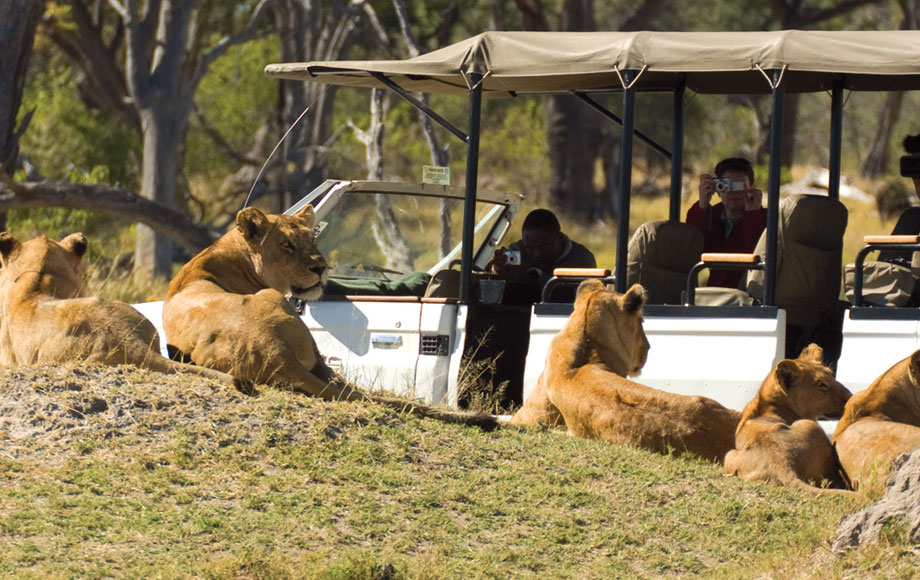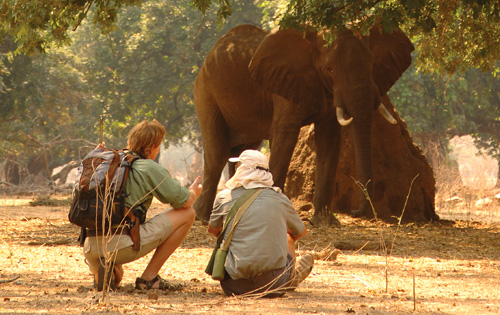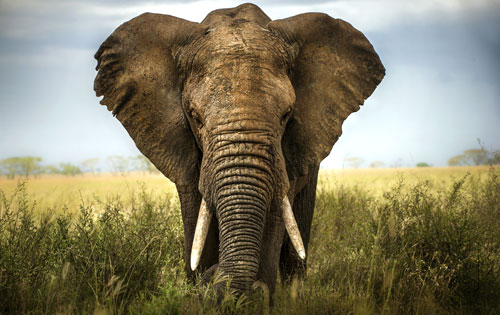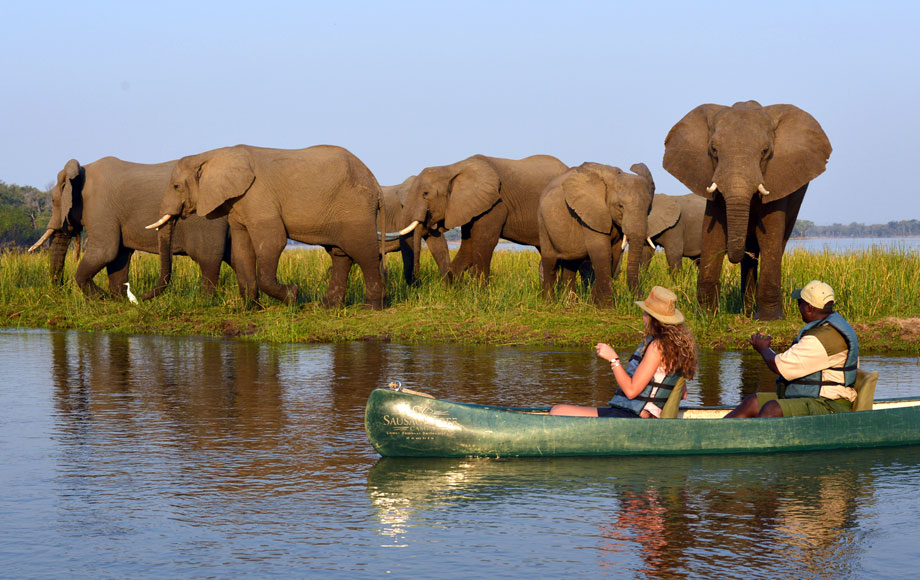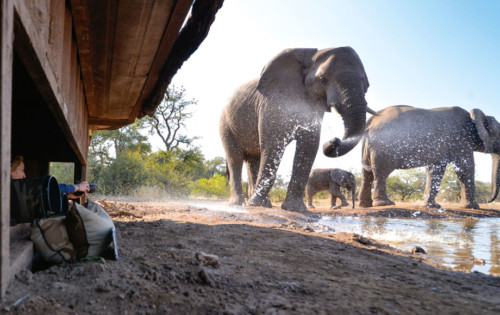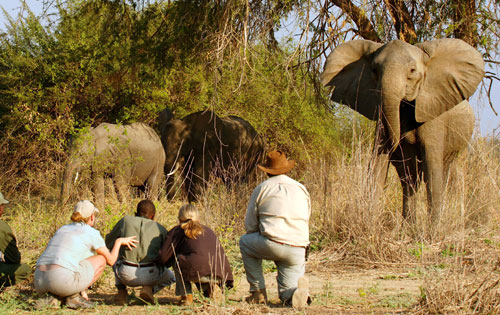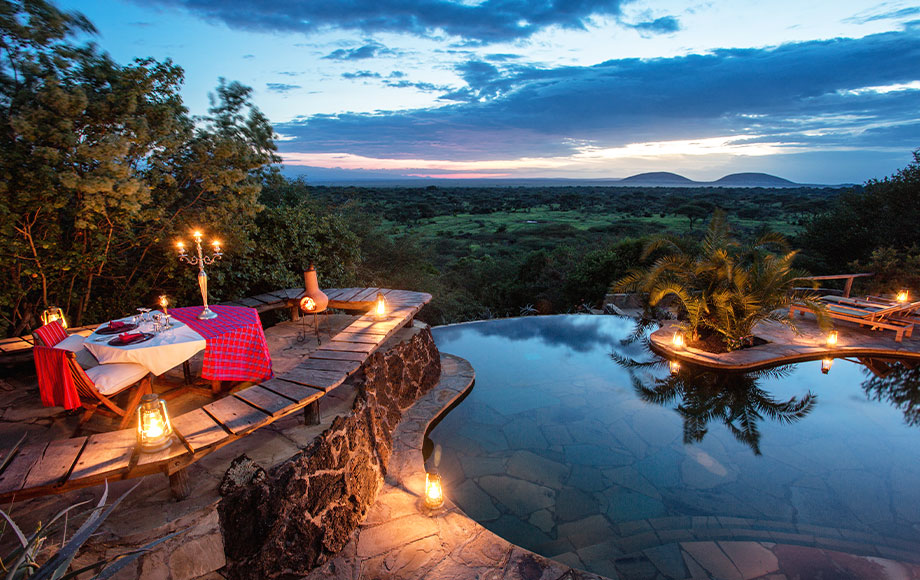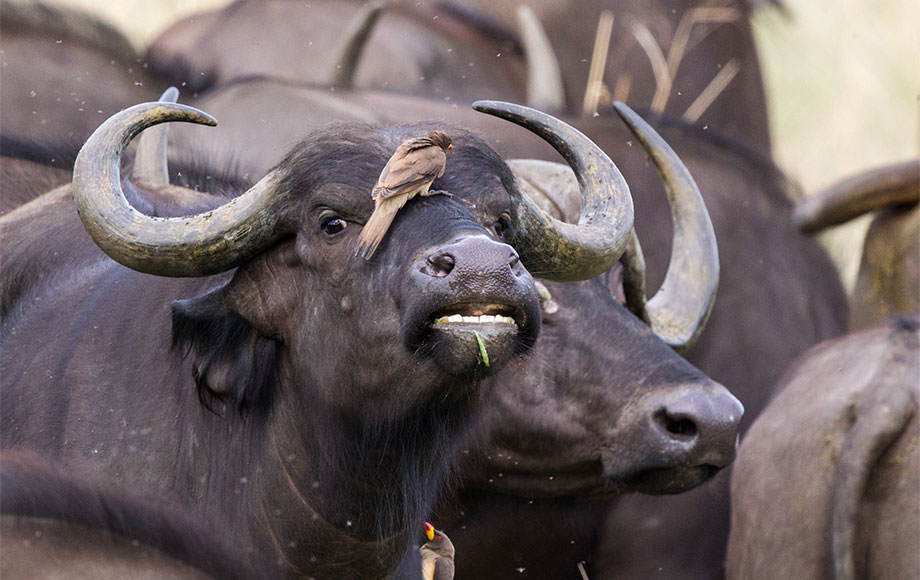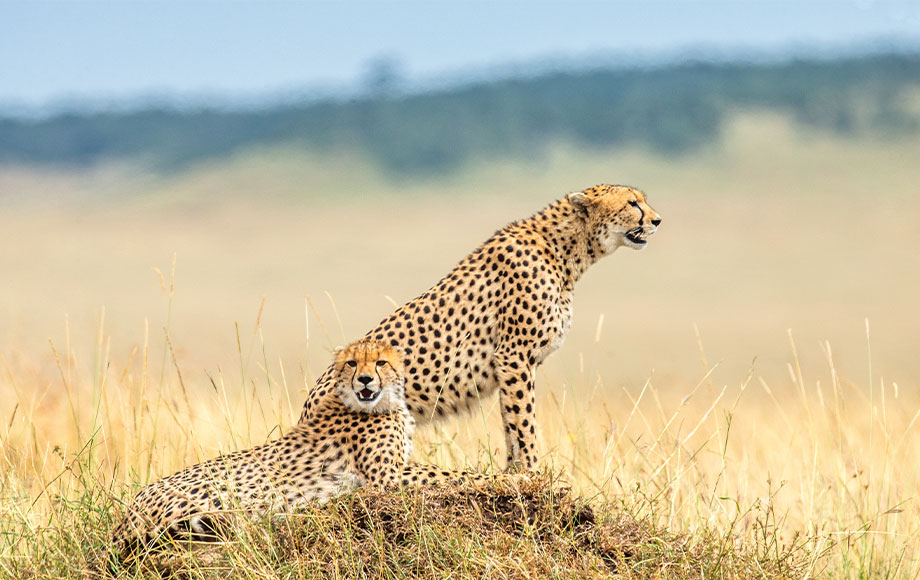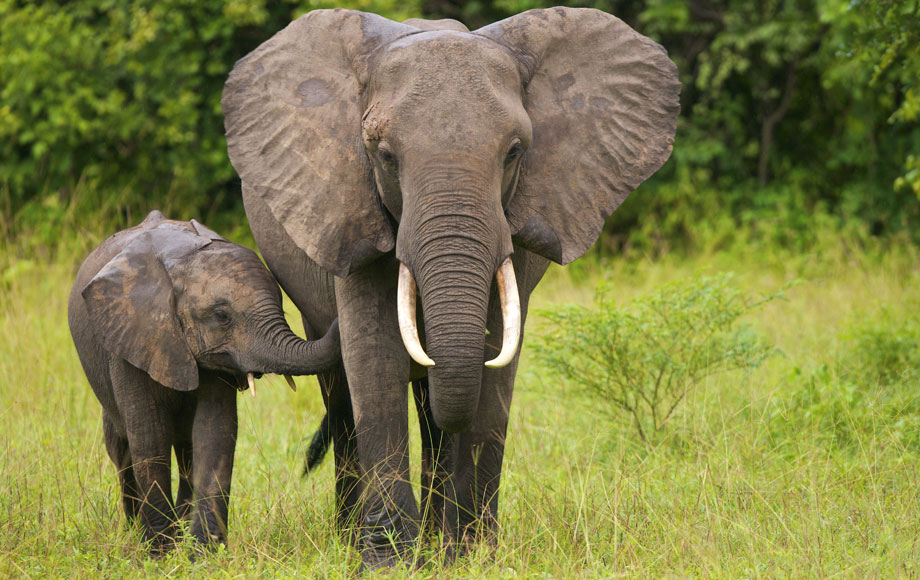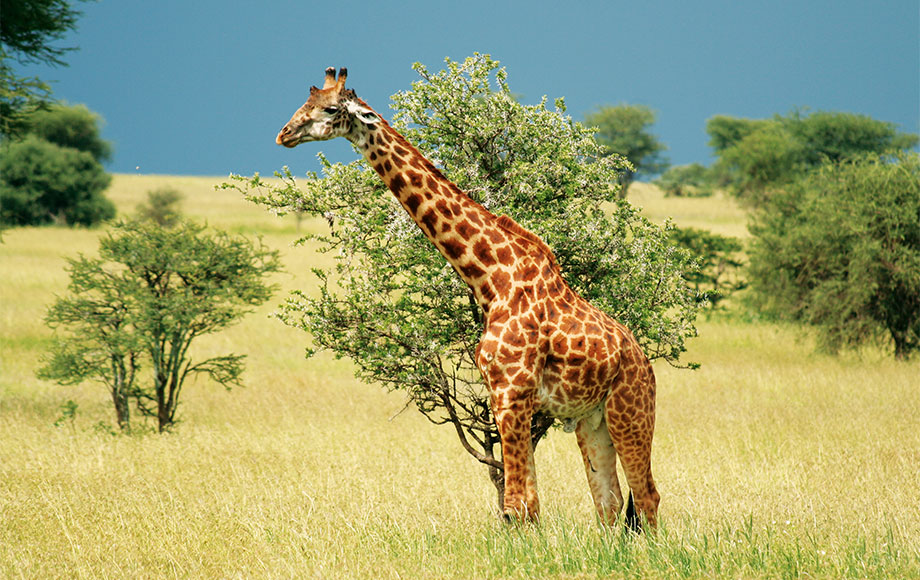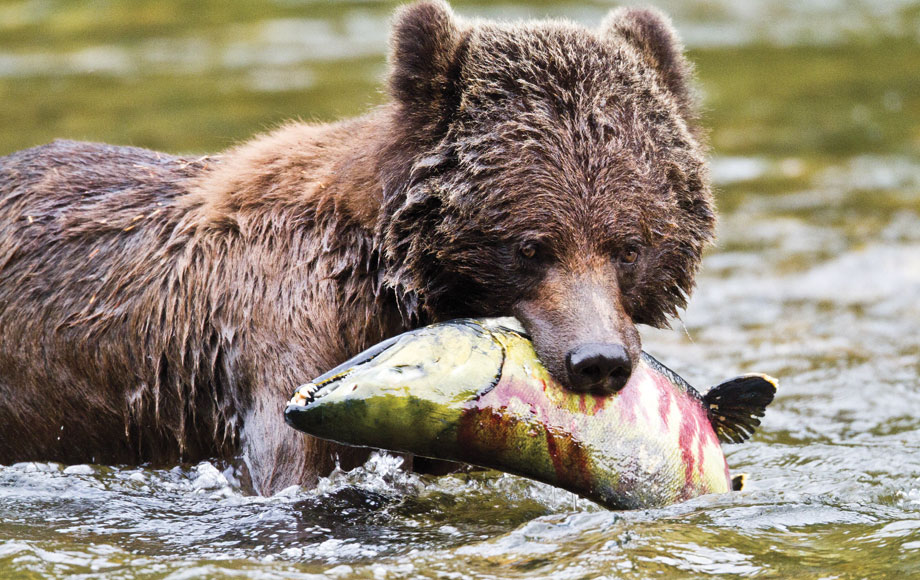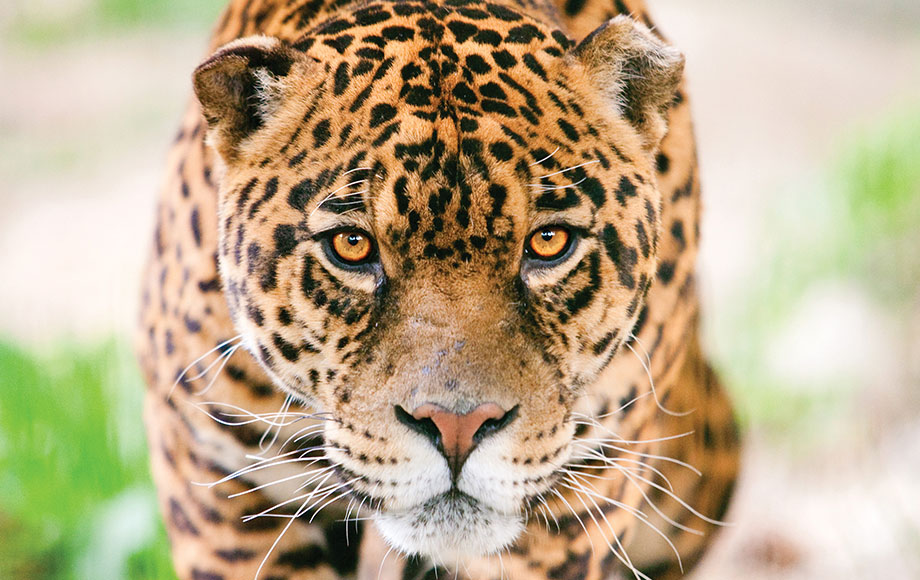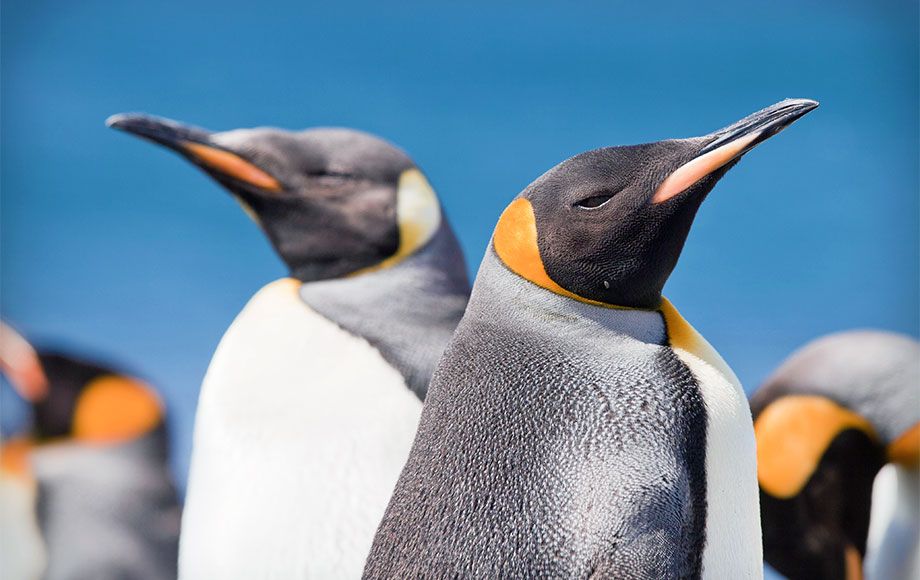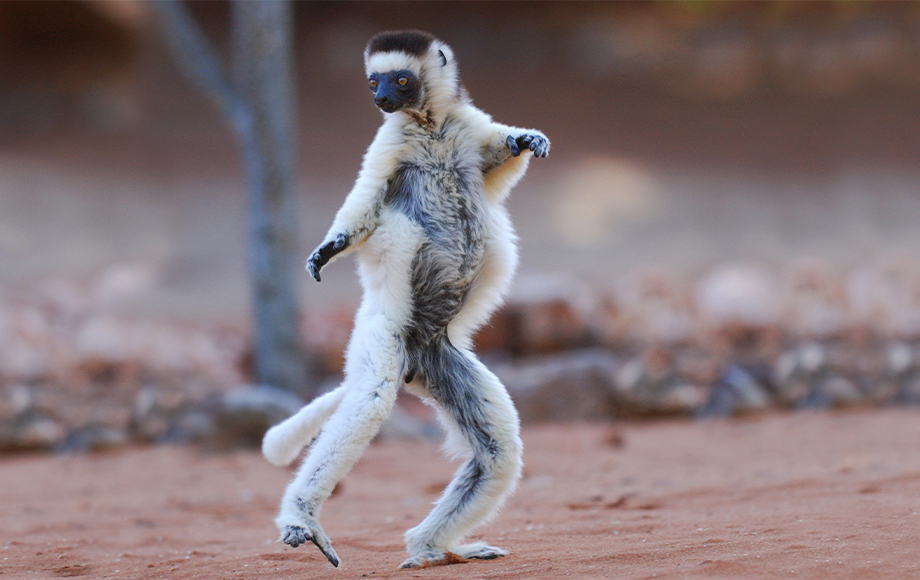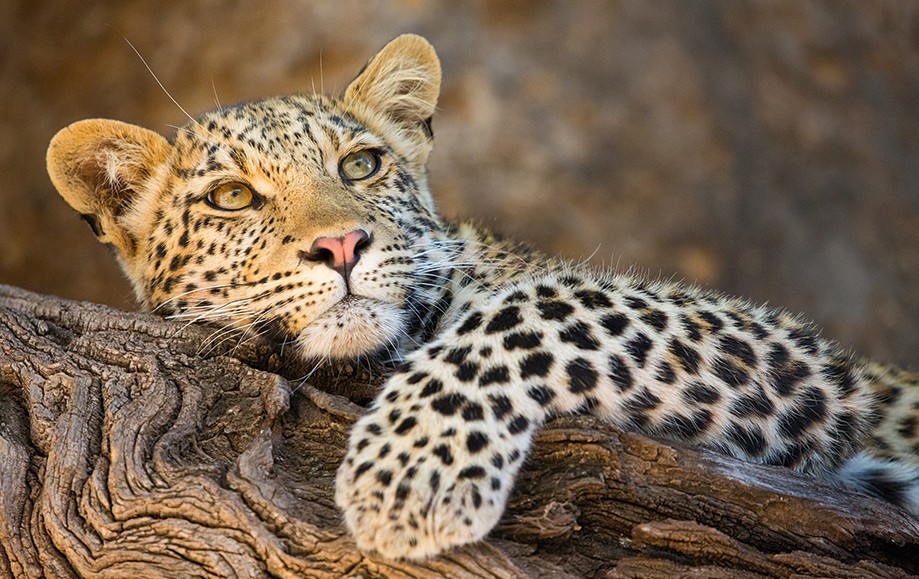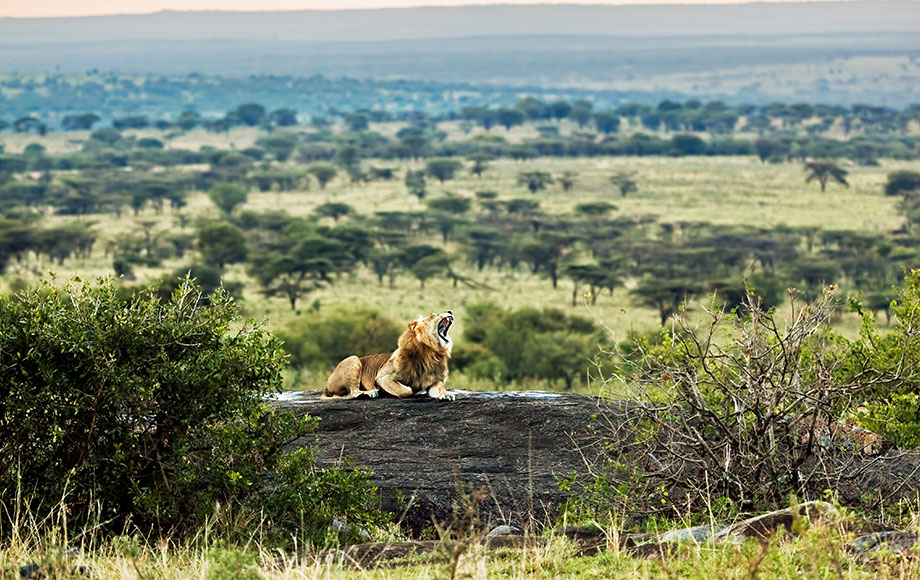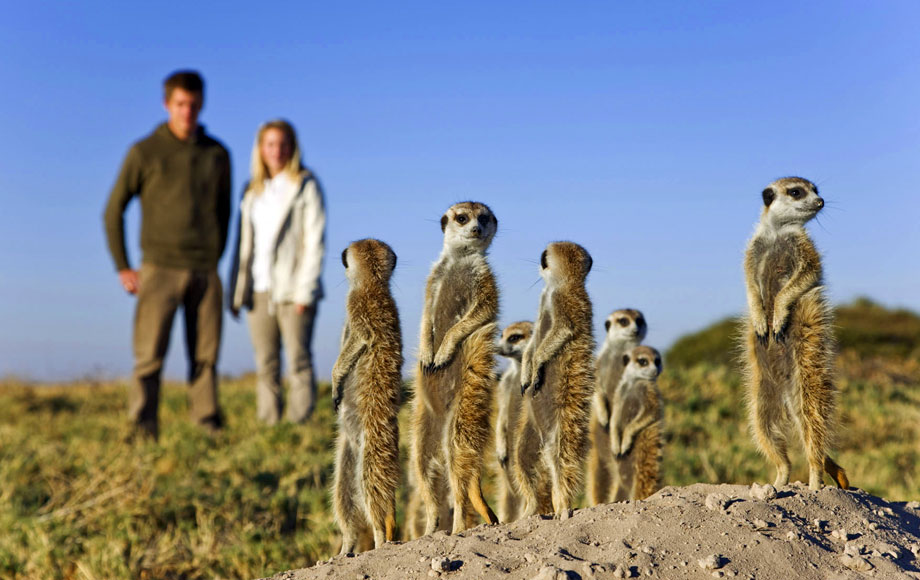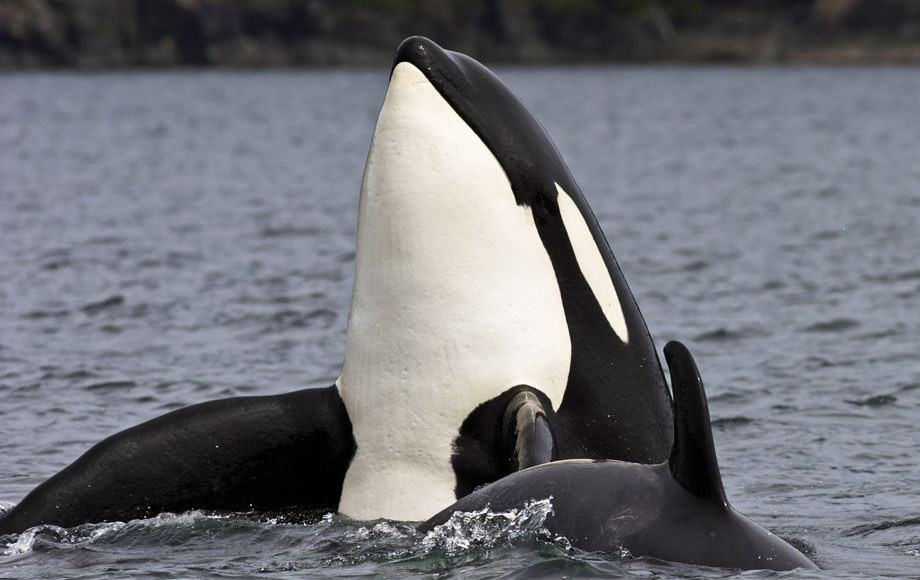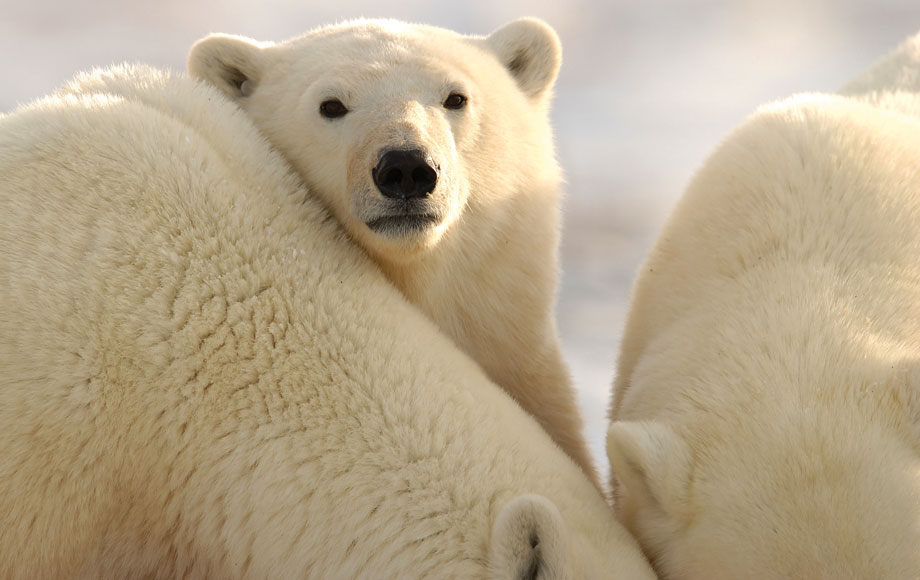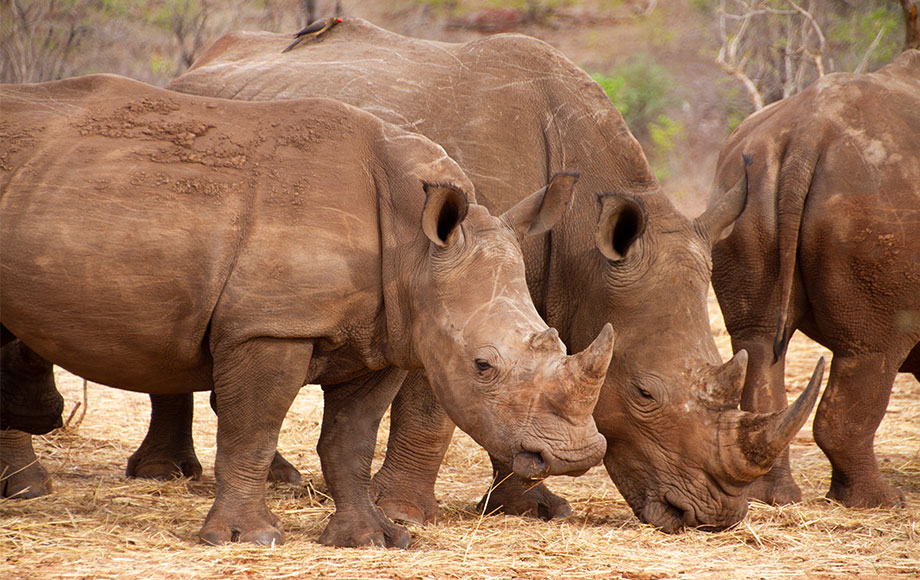African elephants are the world’s largest land mammal and were once numerous, roaming across the whole African continent.
They probably numbered in their millions but today they are reduced to small areas of suitable habitat and protected national parks. There are two sub species: the larger savannah or bush elephant, which today lives on the grasslands and woodlands of eastern and southern Africa, and the smaller forest elephant, which lives in the forests of central and West Africa. The biggest threat to elephants is habitat loss, human-elephant conflict and ivory poaching.
Elephants have a highly complex social structure which makes them fascinating to watch. Herds are led by the matriarch, usually the oldest female, and comprise related adult females and young elephants. Young males are forced out of the herd once they reach puberty (12 to 15 years) and live alone or in a bachelor herd. The bulls aren’t ready to mate until they are about 30 years old when they experience a boost in testosterone called musth, which can last about 6 months. When they find a female in oestrus they temporarily join the cow herd to mate. The gestation period in elephants is an incredible 22 months, after which usually one calf is born. Baby elephants stand about 3 feet tall and can weigh over 90 kilograms! The newborn will be carefully watched and protected by the other females until it is weaned at around 2 to 3 year’s old or even older.
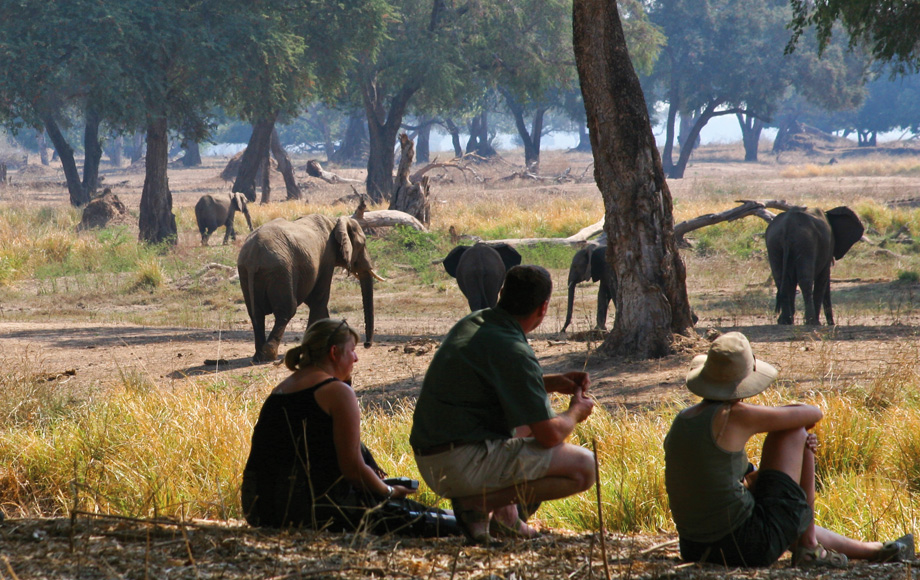
Common Name – African Elephant
Scientific Name – Loxodonta africana
Current IUCN Red List Status – VU
Estimated no. of mature individuals – 415,000
Elephant language
Many studies have been done on elephants and results have shown that they are highly intelligent animals with a sophisticated way of communicating with each other. They have a wide range of vocalisations, from grunts and low rumbles to squeals and loud trumpets. Some of their rumbles are so low they cannot be heard by humans and yet the sound can travel many kilometres away. Researchers have discovered that they can sense seismic vibrations through the sensitive pads on their feet and sometimes lay their trunks on the ground to pick up vibrations. Elephants are very tactile, and use touch and smell to communicate and maintain social bonds.
Elephant Viewing on Safari
Encountering elephants is always one of the highlights of any safari, and it’s not just because of their size and bulk. Being such highly intelligent and social animals they are always interesting to watch. There is always something going on in the breeding herds, with very young elephants learning from their mothers, or playing with their siblings, or young males showing off and perhaps “mock charging” a vehicle. On the banks of the Zambezi in Zimbabwe male elephants sometimes stand on their hind legs to reach the seed pods on the giant acacia trees – an amazing sight. Old bull elephants can be very easy going and approachable, as they’ve “seen it all” during their lifetimes. However if they are “in musth” then it’s best to keep a safe distance!
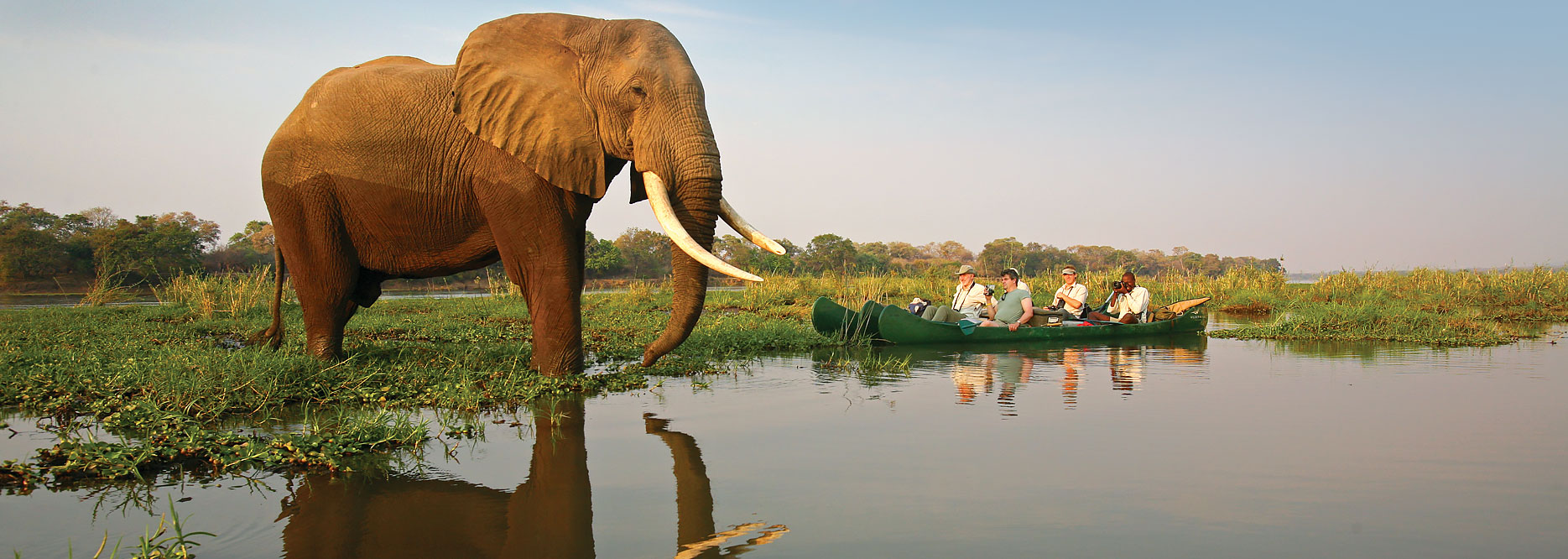
Best safaris to see elephants
Best places to see Elephant
Where is the best place to see elephants in Africa
These huge pachyderms can be seen in many wildlife parks in East and Southern Africa but some areas have large numbers of elephants, in particular Botswana’s Chobe National Park, Zimbabwe’s Hwange National Park and South Africa’s Kruger National Park and Sabi Sand Game Reserve. In Namibia you can see rare desert adapted elephants whilst in Kenya’s Amboseli National Park a prized photograph is one with elephants against the backdrop of Mount Kilimanjaro. In areas where there has been no hunting for many years the elephants are more relaxed and easier to approach and view. One of our favourite places is Mana Pools on the Zambezi River in Zimbabwe where you can canoe and sometimes even walk close to huge bull elephants on the river bank.
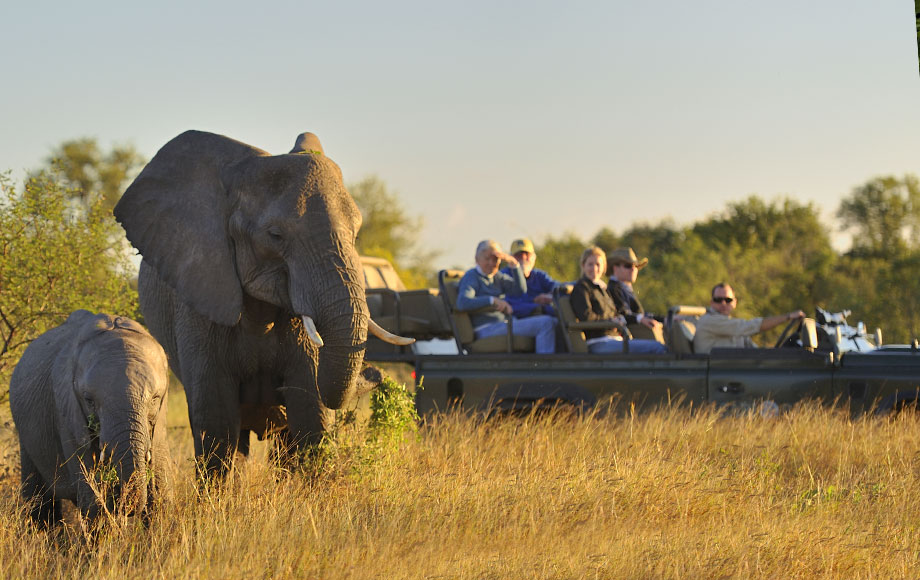
Elephant Facts:
Big Tusks
The magnificent ivory tusks can grow as long as 3 metres
Memories that last a lifetime
Elephants have excellent memories – “an elephant never forgets”
“Who are you calling big nose?”
An elephant’s trunk is an extension of their nose and top lip
Portable air-conditioners
Flapping their large ears helps to radiate heat.
Extended families
Families can form clans of up to 70 individuals.
Old timer
Elephants live up to 70 years old
Giant vegetarians
Elephants eat roots, leaves, branches, fruit and grass.
More Wildlife
JOIN OUR
E-Newsletter
Sign up to receive updates about exciting journeys, special offers and more
"*" indicates required fields
